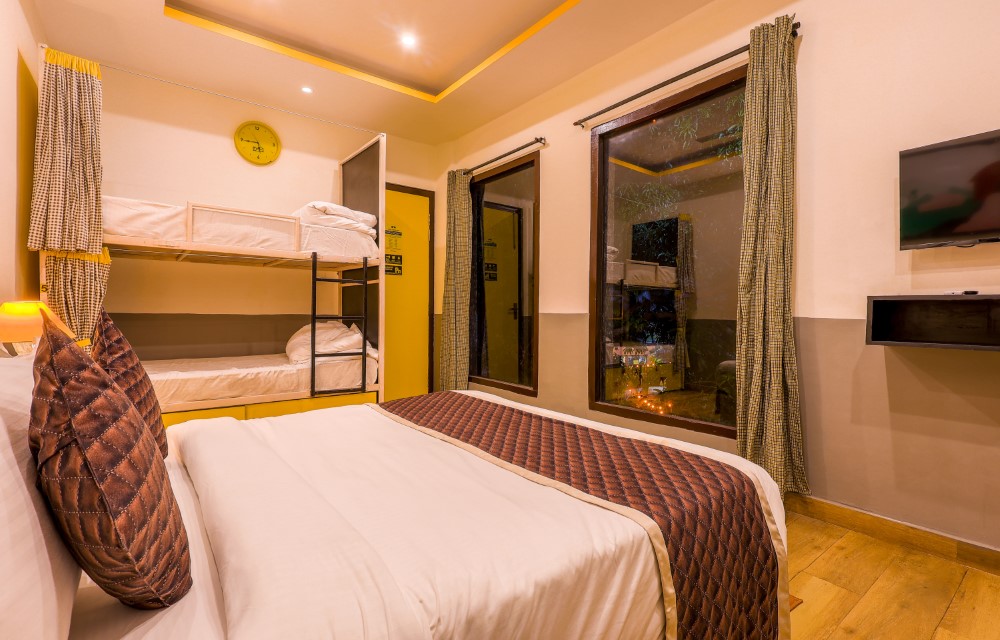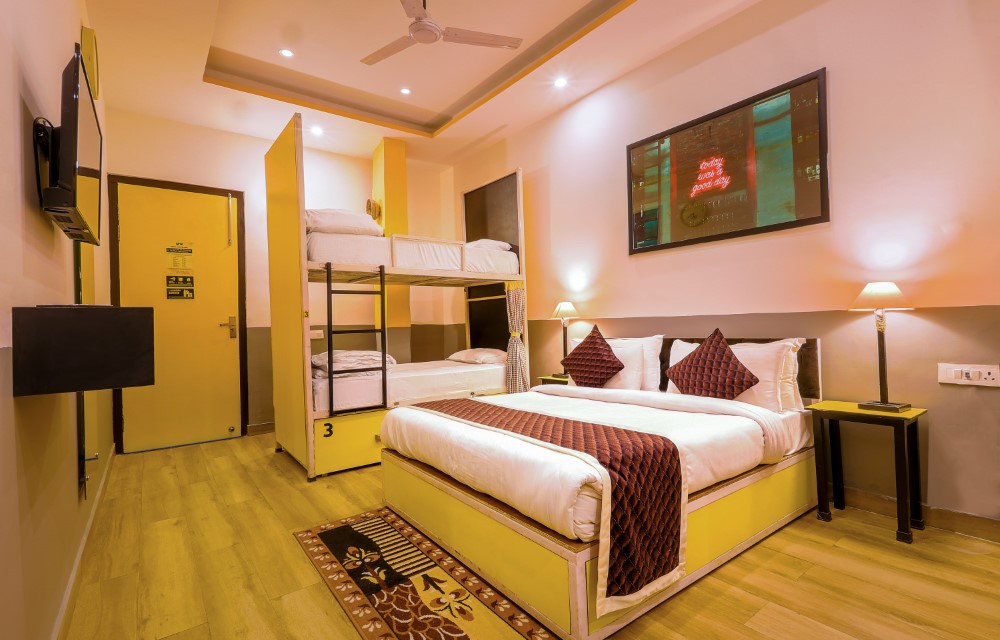Jim Corbett National Park: A Complete Guide to Jungle Safari & Wildlife Sightings
Jim Corbett National Park, located in Uttarakhand, India, is a paradise for nature and wildlife lovers. Established in 1936 as Hailey National Park, it was later renamed in honor of Jim Corbett, the legendary hunter-turned-conservationist. The park is part of the larger Corbett Tiger Reserve and spans an impressive 1,318 square kilometers , offering stunning landscapes ranging from dense forests and grasslands to riverine belts and hills.
Jungle Safari in Jim Corbett National Park
A jungle safari in Jim Corbett is the best way to experience its breathtaking beauty and diverse wildlife. The park offers different types of safaris, including:
- Jeep Safari – A popular choice for small groups, allowing deep forest exploration.
- Canter Safari – Ideal for larger groups, primarily operating in the Dhikala Zone.
- Elephant Safari – (Currently discontinued but was once a unique way to explore the park.)
Safari Zones in Jim Corbett National Park
Jim Corbett is divided into six major safari zones, each offering a unique experience. Let’s take a look at each of them:
1. Dhikala Zone (Most Popular & Best for Wildlife Sightings)
- Why Visit? It is the largest zone and offers the highest chances of spotting tigers and elephants.
- Safari Type: Canter Safari & Jeep Safari (Day & Night Stay)
- Key Wildlife: Bengal Tigers, Asiatic Elephants, Crocodiles, Wild Boars, Hog Deer, and over 600 bird species.
- Best Time to Visit: November to June (closed during monsoon)
- Special Feature: Dhikala Forest Rest House allows an overnight stay inside the jungle for an immersive experience.
2. Bijrani Zone (Best for Jeep Safari & Tiger Sightings)
- Why Visit? It is the largest zone and offers the highest chances of spotting tigers and elephants.
- Safari Type: Jeep Safari
- Key Wildlife: Bengal Tigers, Leopards, Jackals, Wild Elephants, and Deer species.
- Best Time to Visit: October to June
- Special Feature: Known for its beautiful Sal forests and open meadows.
3. Jhirna Zone (Open Throughout the Year)
- Why Visit? Unlike other zones, it remains open even during the monsoon season.
- Safari Type: Jeep Safari
- Key Wildlife: Sloth Bears, Leopards, Wild Boars, Tigers, and various deer species.
- Best Time to Visit: Year-round, but best from October to June
- Special Feature: Less crowded compared to Dhikala and Bijrani, offering a peaceful safari experience.
4. Dhela Zone (Good for Bird Watching & Diverse Wildlife)
- Why Visit? It is a buffer zone with a diverse range of animals and rich birdlife.
- Safari Type: Jeep Safari
- Key Wildlife: Tigers, Leopards, Elephants, Barking Deer, and various bird species.
- Best Time to Visit: Year-round
- Special Feature: Its mix of dense forests and open grasslands attract a variety of wildlife.
5. Durga Devi Zone (Best for Bird Lovers & Leopards)
- Why Visit? This zone is known for its hilly terrain and excellent birdwatching opportunities.
- Safari Type: Jeep Safari
- Key Wildlife: Leopards, Tigers, Elephants, Otters, and Rare Mahseer Fish in Ramganga River.
- Best Time to Visit: November to June
- Special Feature: A riverine ecosystem perfect for bird photography.
6. Garjiya Zone (Newly Opened & Less Crowded)
- Why Visit? A peaceful zone, perfect for nature lovers.
- Safari Type: Jeep Safari
- Key Wildlife: Tigers, Elephants, Deers, and many bird species.
- Best Time to Visit: Year-round
- Special Feature: Close to the famous Garjiya Devi Temple.
Best Time to Visit Jim Corbett National Park
The best time to visit depends on the kind of experience you seek:
- Winter (November – February): Ideal for birdwatching, pleasant weather, and excellent wildlife sightings.
- Summer (March – June): Best for tiger spotting, as animals gather near water sources.
- Monsoon (July – September): Only limited safari zones (Jhirna & Dhela) remain open. The park is lush and beautiful, but sightings may be lower.
Wildlife in Jim Corbett National Park
Jim Corbett is home to a rich variety of flora and fauna. Some of the prominent wildlife species you may encounter include:
- Big Cats: Bengal Tigers, Leopards
- Herbivores: Elephants, Spotted Deer, Sambar Deer, Barking Deer, Nilgai
- Other Mammals: Sloth Bears, Jackals, Wild Boars, Otters, Himalayan Black Bears
- Reptiles: Crocodiles, Monitor Lizards, Indian Python, King Cobra
- Birds: Over 650 species, including Hornbills, Eagles, Kingfishers, and the Great Pied Hornbill
Conclusion
Jim Corbett National Park offers a thrilling and unforgettable experience for wildlife enthusiasts, photographers, and adventure seekers. The Dhikala and Bijrani zones are the best for tiger sightings, while Dhela and Durga Devi zones are perfect for birdwatching and peaceful safaris. The best time to visit is between November and June for an optimal safari experience.
Are you ready to embark on a thrilling jungle safari? Plan your trip now and immerse yourself in the wild beauty of Jim Corbett National Park!



